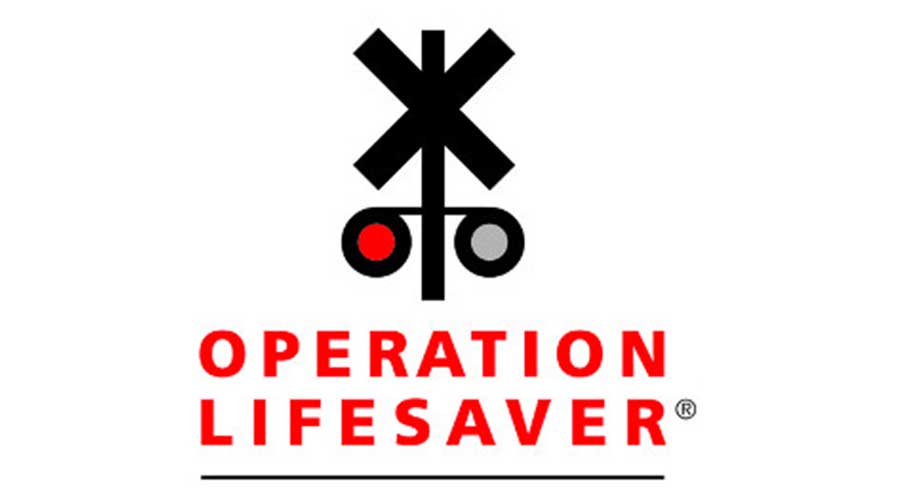Newsletter Sign Up
Stay updated on news, articles and information for the rail industry
Stay updated on news, articles and information for the rail industry
Rail News Home
Rail Industry Trends
Rail News: Rail Industry Trends
11/9/2012
Rail News: Rail Industry Trends
AAR: Hurricane put hurt on U.S. carload counts in late October
advertisement
Last week, which transitioned from October into November, wasn't a good one traffic-wise for most U.S. railroads because of Hurricane Sandy's impacts in the Northeast. The entire month of October wasn't particularly kind to their carload counts, either.
Last month, U.S. railroads originated 1,422,654 carloads, down 6.1 percent from October 2011's level, according to the Association of American Railroads (AAR). Although petroleum and petroleum products loads jumped 54.5 percent, crushed stone, sand and gravel traffic climbed 11.9 percent, and motor vehicles and parts volume rose 5.5 percent, iron and steel scrap loads plunged 24.9 percent, coal volume dropped 16 percent and metallic ore shipments fell 13.3 percent. Carloads excluding coal increased 1.9 percent.
"The fundamentals of U.S. rail traffic remained roughly the same in October as in recent months: weakness in coal, remarkable growth in petroleum and petroleum products, a slight slowing of growth in intermodal and autos, and mixed results for everything else," said AAR Senior Vice President John Gray in a prepared statement.
In the good news department, intermodal traffic rose 1.5 percent in October to 1,233,475 units — the 35th-straight month the traffic segment posted a gain, according to the AAR.
For just the week ending Nov. 3, which included Hurricane Sandy, U.S. carloads declined 6.8 percent to 278,230 units and intermodal volume dipped 6.2 percent to 224,467 units compared with the same week last year.
Because intermodal networks were disrupted by the hurricane, eastern rail intermodal volumes contracted 7 percent and western volume declined 2 percent, said Robert W. Baird & Co. Inc. analysts in their weekly "Rail Flash" report.
"Union Pacific noted that its rail traffic was impacted at interchange points with the eastern rails, accounting for broad intermodal weakness across the rails," they said. "CSX acknowledged domestic intermodal volumes were softer in the fourth quarter due to a weak 2012 peak season, but maintained its optimism for continued highway-to-intermodal conversion opportunities."
The storm's wrath was evident in the eastern Class Is' performance metrics: Terminal dwell time increased at CSX and Norfolk Southern Railway by 9 percent and 6 percent, respectively, from Week No. 43 to Week No. 44, Baird analysts said.
Meanwhile, Canadian railroads reported 77,904 carloads for the week ending Nov. 3, down 3.1 percent, and 50,705 containers and trailers, down 2.3 percent year over year. Mexican railroads' weekly carloads inched up 0.7 percent to 14,465 units and their intermodal volume climbed 18 percent to 10,488 units.
Through 2012's first 44 weeks, 13 reporting U.S., Canadian and Mexican railroads handled 16,497,384 carloads, down 1.8 percent, and 13,161,986 containers and trailers, up 4.5 percent compared with the same 2011 period.
Last month, U.S. railroads originated 1,422,654 carloads, down 6.1 percent from October 2011's level, according to the Association of American Railroads (AAR). Although petroleum and petroleum products loads jumped 54.5 percent, crushed stone, sand and gravel traffic climbed 11.9 percent, and motor vehicles and parts volume rose 5.5 percent, iron and steel scrap loads plunged 24.9 percent, coal volume dropped 16 percent and metallic ore shipments fell 13.3 percent. Carloads excluding coal increased 1.9 percent.
"The fundamentals of U.S. rail traffic remained roughly the same in October as in recent months: weakness in coal, remarkable growth in petroleum and petroleum products, a slight slowing of growth in intermodal and autos, and mixed results for everything else," said AAR Senior Vice President John Gray in a prepared statement.
In the good news department, intermodal traffic rose 1.5 percent in October to 1,233,475 units — the 35th-straight month the traffic segment posted a gain, according to the AAR.
For just the week ending Nov. 3, which included Hurricane Sandy, U.S. carloads declined 6.8 percent to 278,230 units and intermodal volume dipped 6.2 percent to 224,467 units compared with the same week last year.
Because intermodal networks were disrupted by the hurricane, eastern rail intermodal volumes contracted 7 percent and western volume declined 2 percent, said Robert W. Baird & Co. Inc. analysts in their weekly "Rail Flash" report.
"Union Pacific noted that its rail traffic was impacted at interchange points with the eastern rails, accounting for broad intermodal weakness across the rails," they said. "CSX acknowledged domestic intermodal volumes were softer in the fourth quarter due to a weak 2012 peak season, but maintained its optimism for continued highway-to-intermodal conversion opportunities."
The storm's wrath was evident in the eastern Class Is' performance metrics: Terminal dwell time increased at CSX and Norfolk Southern Railway by 9 percent and 6 percent, respectively, from Week No. 43 to Week No. 44, Baird analysts said.
Meanwhile, Canadian railroads reported 77,904 carloads for the week ending Nov. 3, down 3.1 percent, and 50,705 containers and trailers, down 2.3 percent year over year. Mexican railroads' weekly carloads inched up 0.7 percent to 14,465 units and their intermodal volume climbed 18 percent to 10,488 units.
Through 2012's first 44 weeks, 13 reporting U.S., Canadian and Mexican railroads handled 16,497,384 carloads, down 1.8 percent, and 13,161,986 containers and trailers, up 4.5 percent compared with the same 2011 period.


 LRW Honors Amtrak’s Acheson As Railway Woman Of The Year
LRW Honors Amtrak’s Acheson As Railway Woman Of The Year
 From Editor-In-Chief Foran: Of Gender Equity And Inclusion
From Editor-In-Chief Foran: Of Gender Equity And Inclusion
 Spotlight On Some Of Today’s Rail Safety Products
Spotlight On Some Of Today’s Rail Safety Products
 Women of Influence in Rail eBook
Women of Influence in Rail eBook
 railPrime
railPrime







